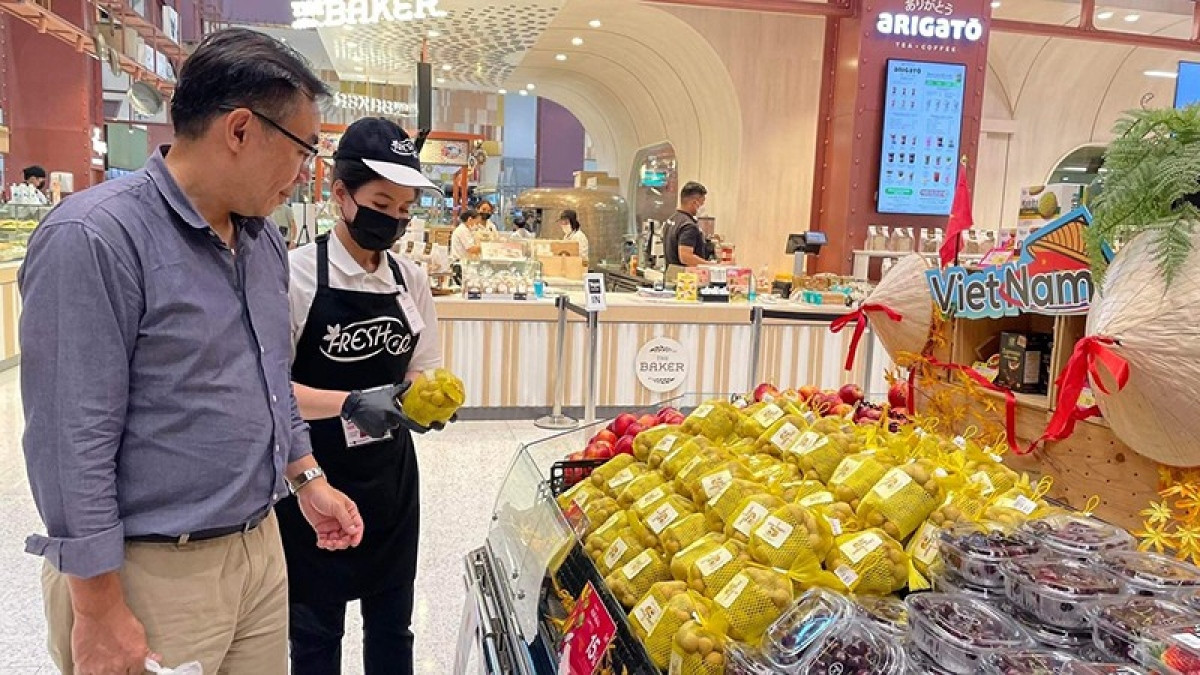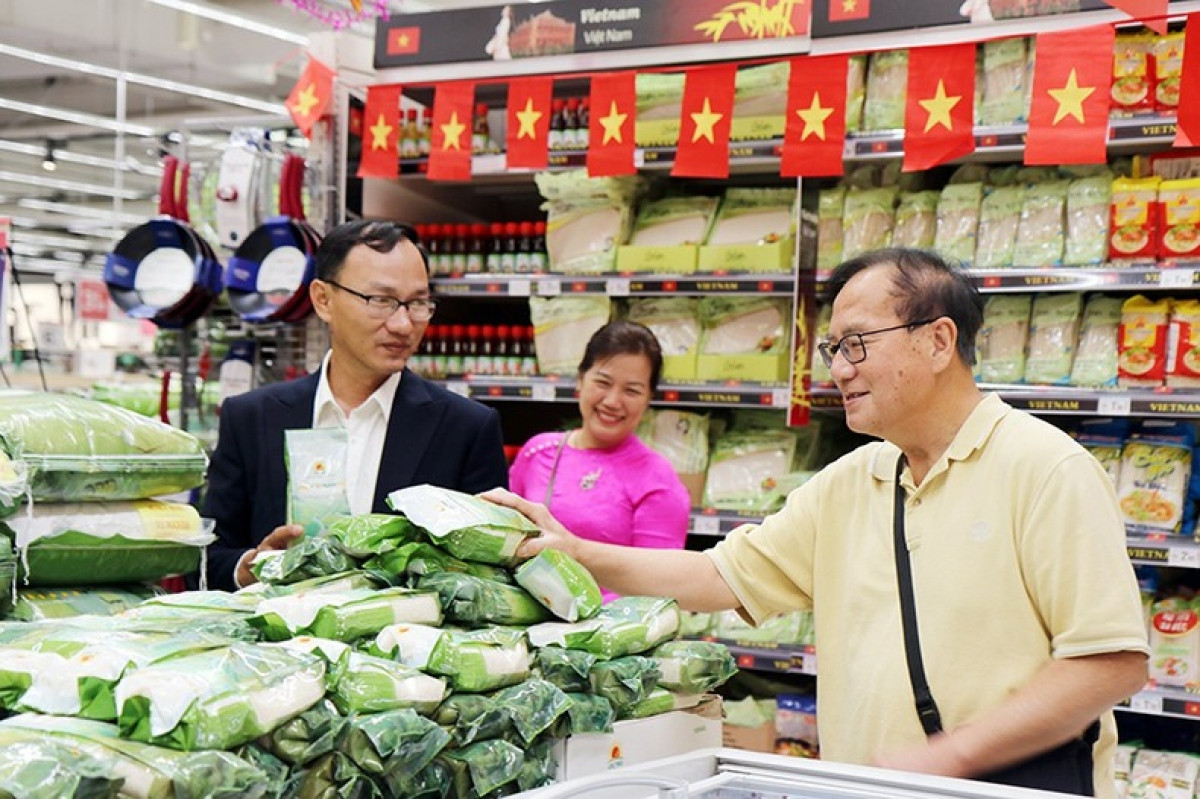
Huge potential

Fresh Vietnamese longans hit the shelves on August 18 at Tops supermarket of Thailand’s Central Retail Group inside CentralWorld, a large shopping and trading complex in the Thai capital of Bangkok. It is expected that approximately 2.3 tonnes of Vietnamese longans meeting Global GAP standards will be marketed in Thailand over the coming days.
Longans make up one of the Vietnamese fruits which are among the favourites with Thai consumers, said Paul Le, vice president of Central Retail in Vietnam.
Longan, litchi, rice, and many other local agricultural products have directly been shipped and distributed to foreign retailers without any intermediary fees. And these products are being sold at supermarkets with their own brands.
This can be viewed as the initial result of the implementation of the Prime Minister’s Decision 1415 issued in November, 2022, that encourages Vietnamese businesses to get directly involved in the foreign distribution network up to 2030. So far, many Vietnamese goods have entered major distribution systems such as Central Retail, AEON, MM Mega Market, and Walmart.
The country is currently among a group of five that exports the most goods to the Walmart chain, with key products including textiles, home appliances, electronics, and ready-to-eat foods, said Nguyen Duc Trong, a sales manager of Walmart Asia.
Vietnamese goods are therefore being displayed for sale not only in Asia and the United States, but also in Europe. Scanesia AS, one of Norway’s largest importers of Asian agricultural products and food, has been purchasing food products from Vietnam over the past 10 years.
The past three years has seen the firm significantly increase orders from the country as the products have gradually improved a lot, from packaging design to product quality, said Emmy Jørgensen, head of the firm.
Sharing this perspective, Paul Le of Central Retail, noted that Vietnamese enterprises have made great strides in branding their products, which has ultimately made them better, easier to remember, and more relevant to the international market.
Through these changes, more Vietnamese goods will be able to reach out to global consumers easily, said Paul Le.
Plenty of work ahead

Vietnam is one of the world’s leading exporters of many agricultural products and foods. Indeed, the proportion of Vietnamese products directly distributed into supermarket chains overseas remains modest.
In order for businesses to reach out to Central Retail supermarket shelves in Thailand and from there to the rest of the world, Paul Le said that they must stand firm on Central Retail supermarket shelves right in the domestic market.
It can therefore be seen as necessary to first focus on the processing, packaging, and branding of the product, along with getting to know consumer tastes of the importing countries, he suggested.
Meanwhile, Emmy Jørgensen of Scanesia AS shared that it is important for suppliers to fully comply with and learn carefully about EU rules, with a primary focus on quality control systems such as HACCP, ISO, and BRC, before starting to export their products.
She also reminded the supplier of delivery deadlines which ensure the safety of the importer’s logistics. Indeed, she said that Norway in particular and the Nordic market in general have four seasons, and the consumption of goods is sometimes different from season to season.
Currently, Scanesia AS is in the midst of facing fierce competition from different suppliers, and hopefully that Vietnamese goods can hold competitive and stable prices, she expected.
Ta Hoang Linh, director of the European - American Market Department under the Ministry of Industry and Trade, pointed out that many businesses still have not made the most of the foreign distribution system, due to certain difficulties in their supply capacity.
In a bid to address the challenge, Linh suggested that small and medium sized businesses team up together to create a strong supply chain in an efforts to effectively supply products to large retail distribution groups.
These businesses should also get capital assistance from financial organisations such as commercial banks which can help them to modernise machinery, production lines, and technology, in order to enter foreign supply chains, he concluded.
Source: VOV